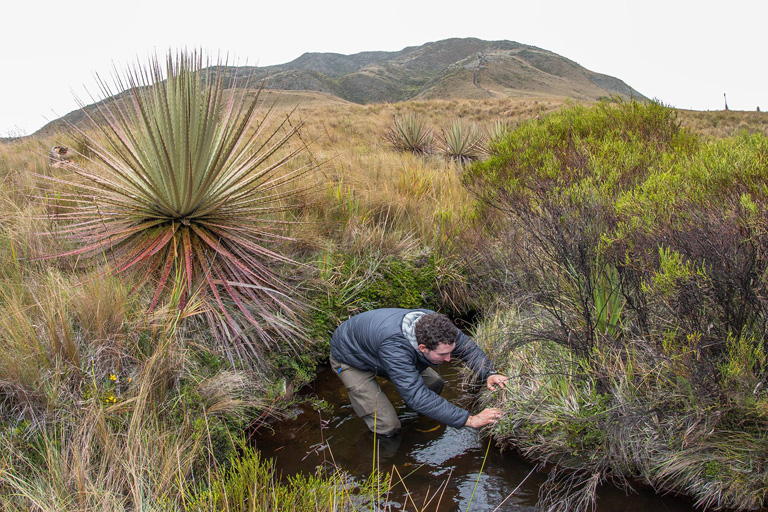- A thought-to-be-extinct toad from the highlands of Ecuador has been rediscovered.
- The Azuay Stubfoot-Toad (Atelopus bomolochos) hadn’t been seen since 2002 and was presumed by some researchers to be extinct in the wild due to chytrid.
- It’s not the first time that an Atelopus species has seemingly risen from the dead.
A thought-to-be-extinct toad from the highlands of Ecuador has been rediscovered by three teams of scientists.
The Azuay Stubfoot-Toad (Atelopus bomolochos) hadn’t been seen since 2002 and was presumed by some researchers to be extinct in the wild due to chytrid, a deadly fungal disease that has taken an especially heavy toll on members of the Atelopus genus, a group that is famed for its colorful markings and unusual hand- and foot-waving to communicate with other frogs and deter predators.
But last month three teams independently found individuals during assessments near Cuenca, Ecuador.
“Two teams, one from Ministerio Ambiente Ecuador, and one from Universidad del Azuay, independently rediscovered the presumably extinct species at two localities in the vicinities of Cuenca, Ecuador,” wrote Tropical Herping in a Facebook post. “One day after one of the initial sightings, a team of biologists from Zoológico de Cuenca ‘Bioparque Amaru’ and Tropical Herping, visited the locality to assess the health of the population and to evaluate the best actions to prevent the disappearance of the species. In the process, the team photographed several individuals of this beautiful toad species for the first time since it was last seen in 2002.”

The discovery was a surprise given the disappearance of the once abundant species after chytrid spread through its habitat. Several surveys over the past decade had failed to turn up any individuals.
It’s not the first time that an Atelopus species has seemingly risen from the dead. In 2013 researchers announced the discovery of a population of Atelopus varius, an orange-and-black harlequin toad that was once relatively common from central Costa Rica to western Panama.

The finds raise hopes that there may be other “Lazarus species” whose epitaphs were written a bit too soon.
As a group, amphibians are good candidates to produce other Lazarus species given the high rates of apparent extinction and limited ranges of many frog and salamander species. Amphibians, which are generally less well-known than more conspicuous animals like birds and mammals, have been hard hit by habitat loss, invasive species, disease, pollution, and the effects of climate change.

